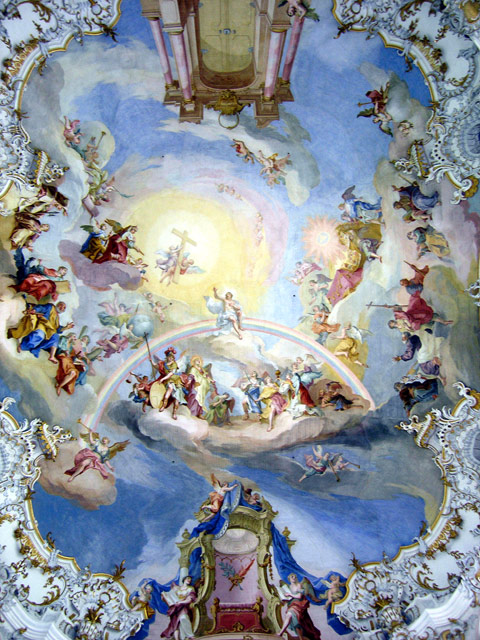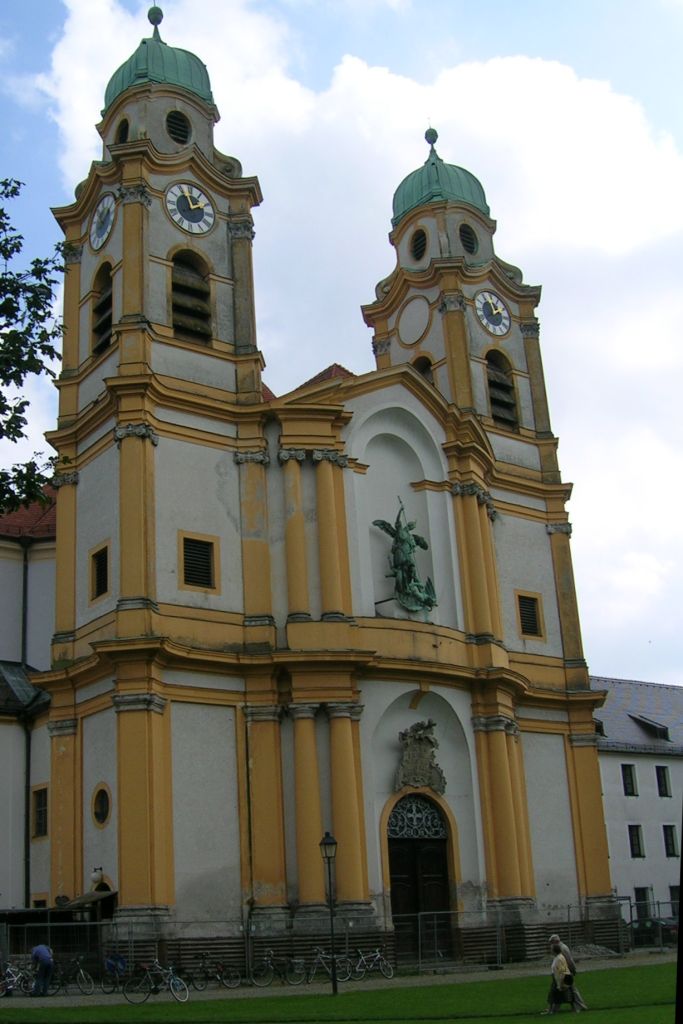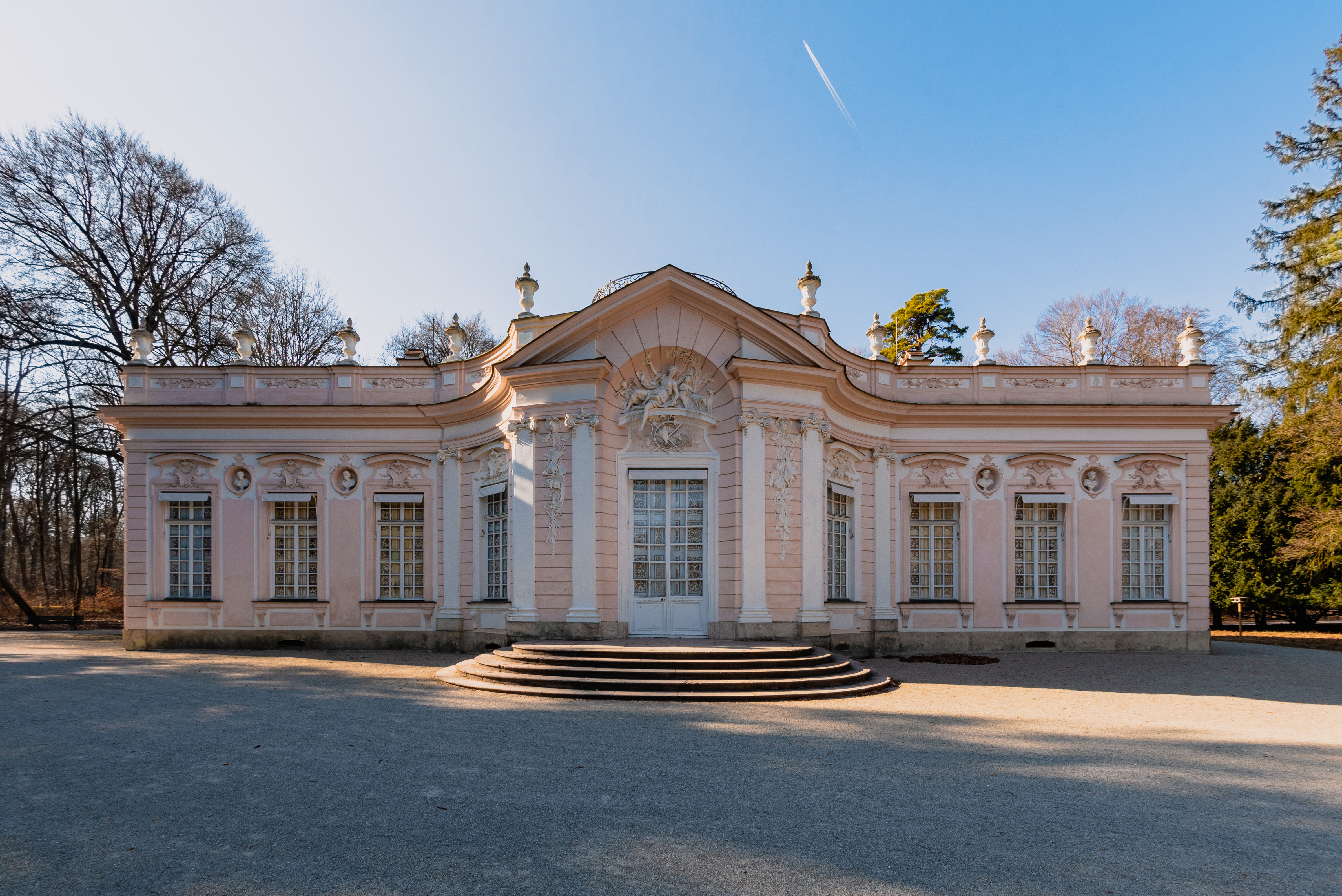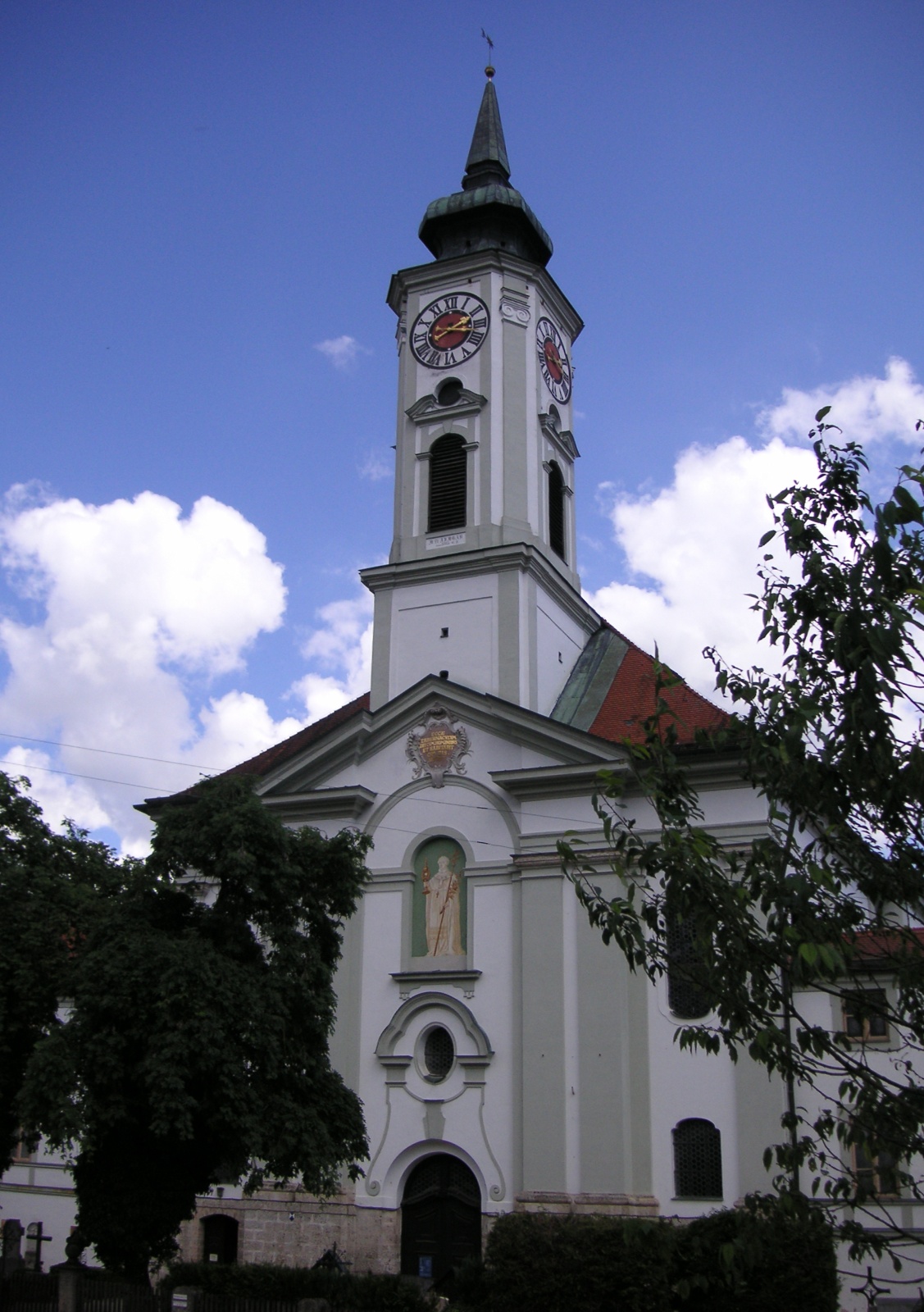|
Johann Baptist Zimmermann
Johann Baptist Zimmermann (3 January 1680, Wessobrunn, Gaispoint — 2 March 1758, Munich) was a German Painting, painter and a prime Stucco, stucco plasterer during the Baroque. Zimmermann was born in Gaispoint, Wessobrunn. He and his brother Dominikus Zimmermann were descended from an artist family of the Wessobrunner School. Work * 1701 stucco and fresco for the church Mariä Empfängnis of Gosseltshausen * 1707 stucco and fresco for the church Maria Schnee in Markt Rettenbach * vor 1710 und 1728: Stucco for the Tegernsee Abbey * 1709/1710: Design for the church St. Johannes in Neuburg an der Kammel-Edelstetten * 1709/1710-1713/1727 (cooperation with his brother): Fresco of Marienkapelle and stucco and fresco for the library of Reichskartause in Buxheim (Allgäu) * 1711-1713: stucco and fresco for the Klosterkirche Maria Saal * 1714: stucco and fresco of Pfarrkirche St. Sixtus von Schliersee * 1714-1722: Stucco for the Ottobeuren Abbey * ca 1715 stucco and fresco for r ... [...More Info...] [...Related Items...] OR: [Wikipedia] [Google] [Baidu] |
Nymphenburg Palace
The Nymphenburg Palace (, Palace of the Nymphs) is a Baroque palace situated in Munich's western district Neuhausen-Nymphenburg, in Bavaria, southern Germany. The Nymphenburg served as the main summer residence for the List of rulers of Bavaria, former rulers of Bavaria of the House of Wittelsbach. Combined with the adjacent Nymphenburg Palace Park it constitutes one of the premier royal palaces of Europe. Its frontal width of (north–south axis) even surpasses Versailles. History Building history The palace was commissioned by the Prince-elector, electoral couple Ferdinand Maria, Elector of Bavaria, Ferdinand Maria and Henriette Adelaide of Savoy to the designs of the Italian architect Agostino Barelli in 1664 after the birth of their son Maximilian II Emanuel, Elector of Bavaria, Maximilian II Emanuel. During its construction Barelli was again replaced (1674) by Enrico Zuccalli. The concept for the mythological decorative programme was supplied by the scholar Emanuele Tesauro ... [...More Info...] [...Related Items...] OR: [Wikipedia] [Google] [Baidu] |
Ettal Abbey
Ettal Abbey () is a Benedictine order, Benedictine monastery in the village of Ettal close to Oberammergau and Garmisch-Partenkirchen in Bavaria, Germany. With a community (as of 2005) of more than 50 monks, with another five at Wechselburg, the Abbey is one of the largest Benedictine houses and is a major attraction for visitors. History Middle Ages and Early Modern period Ettal Abbey was founded on 28 April 1330, Vitalis of Milan, Saint Vitalis of Milan's day, by Emperor Louis IV, Holy Roman Emperor, Ludwig the Bavarian in the Graswang valley, in fulfilment of an vow, on his return from his coronation in Rome, on a site of strategic importance on the primary trade route between Italy and Augsburg. The foundation legend is that Ludwig's horse genuflected three times on the site of the original church building, where a marble statuette of the Madonna (art), Madonna and Child ("Frau Stifterin" or the "Ettal Madonna") now stands. The statuette was brought by Ludwig from Pisa as a g ... [...More Info...] [...Related Items...] OR: [Wikipedia] [Google] [Baidu] |
Wasserburg Am Inn
Wasserburg am Inn (Central Bavarian: ''Wassabuag am Inn'') is a town in Rosenheim district in Upper Bavaria, Germany. The historic centre is a peninsula formed by the meandering river Inn. Many Medieval structures remain intact, giving the city a unique view. Villages Wasserburg consists of 22 ''Ortsteile'': * Attel * Attlerau * Au * Edgarten * Elend * Gabersee * Gern * Heberthal * Kobl * Kornberg * Kroit * Langwiederberg * Limburg * Osterwies * Reisach * Reitmehring * Rottmoos * Seewies * Staudham * Viehhausen * Wasserburg am Inn (main part/center) * Weikertsham History The town was first mentioned in a document (now considered to be a fake) in 1137, when Hallgraf Engelbert moved his residence from the nearby castle Limburg to his "Wasserburg" (Water Castle). It is one of the most historic towns of Old Bavaria – somewhat older than Munich, continually fought over by the Bavarian nobility and, up to the 16th century, on an equal footing with large ... [...More Info...] [...Related Items...] OR: [Wikipedia] [Google] [Baidu] |
St Michael In Berg Am Laim (München)
St Michael in Berg am Laim is a church in Munich, Bavaria, built from 1738 to 1751 by Johann Michael Fischer as Court Church for Elector and Archbishop Clemens August of Cologne, a brother of Emperor Charles. Clemens August owned Berg am Laim as a manor. It was also served by the Military Order of Saint Michael until 1837 and by the ''Archbrotherhood of Saint Michael''until today. The Catholic church is one of the chief works of the Bavarian rococo period. Architecture The elegant façade with its twin towers provides a strong vertical accent was designed as the terminal feature of a street to the inner city which was never built. It is the only church of Fischer which was decorated in the rococo style with rich rocaille, maybe this was due to François de Cuvilliés the Elder, who served as a building inspector for this church. Large round-headed arches divide the interior of the church in different sections. The central space is decorated by pilasters and columns and the ... [...More Info...] [...Related Items...] OR: [Wikipedia] [Google] [Baidu] |
Prien Am Chiemsee
Prien am Chiemsee (official: , High German [], Bavarian (local) dialect []) is a municipality in the Upper Bavarian Rosenheim (district), district of Rosenheim in Germany. The town is a certified Luftkurort, air and Sebastian Kneipp, Kneipp spa on the western shore of the lake of Chiemsee, east of Rosenheim. The name of Prien is derived from the Celtic denomination of the river Prien (''Brigenna,'' 'coming from the mountains'). Geography Neighborhoods The political municipality of Prien am Chiemsee has 36 official neighborhoods: Transport Prien is on the main rail line between Munich and Salzburg. Two branch lines originate at the Prien station. The Chiemgau Railway is a line extending into the foothills of the Alps at Aschau im Chiemgau; it is served by diesel multiple units. The Chiemsee-Bahn is a narrow-gauge steam-operated seasonal tourist line connecting the Prien station with Lake Chiem at Prien-Stock. From there boats operate to Herreninsel in the lake ... [...More Info...] [...Related Items...] OR: [Wikipedia] [Google] [Baidu] |
Amalienburg (Munich)
The Amalienburg is an elaborate hunting lodge on the grounds of the Nymphenburg Palace Park, Munich, in southern Germany. It was designed by François de Cuvilliés in Rococo style and constructed between 1734 and 1739 for Elector Karl Albrecht and later Holy Roman Emperor Charles VII and his wife, Maria Amalia of Austria. Architecture Most of the ground floor is given over to the round ''Hall of Mirrors'' in the center of the building; its mirrored walls reflect the park. It was designed by Johann Baptist Zimmermann and Joachim Dietrich (1690–1753). It creates an ethereal atmosphere in the Bavarian national colors of silver and blue. In the south of the hall, the door leads to the electoral ''Rest Room'' and the ''Blue Cabinet'', with access to the privy chamber. The Rest Room was the bedroom of the Electress, and the pavilion also accommodates an armoury and a kennel room for the hunting dogs in the Blue Cabinet. North from the Hall of Mirrors is the entrance to the ... [...More Info...] [...Related Items...] OR: [Wikipedia] [Google] [Baidu] |
Schäftlarn Abbey
Schäftlarn Abbey (Kloster Schäftlarn) is a Order of St. Benedict, Benedictine monastery on the Isar in Schäftlarn, south of Munich in Bavaria, Germany. History The monastery was founded in 762 by Waldrich, Bishop of Passau, Waltrich, a priest of noble family, on his own land. The monastery was dedicated to Saint Denis of Paris, Saint Dionysius of Paris. The first monks came from the cathedral monastery of Freising Cathedral, Saint Mary and Saint Corbinian in Freising. In the tenth century the monastery was turned into a house for lay canons. During the next two centuries the monastery grew as a result of various gifts and endowments (among them the estates of Schwabing and Hesselohe). In 955 the monastery was destroyed by the Hungarians who were then making marauding incursions into Germany.Löffler, ... [...More Info...] [...Related Items...] OR: [Wikipedia] [Google] [Baidu] |
Landshut
Landshut (; ) is a town in Bavaria, Germany, on the banks of the Isar, River Isar. Landshut is the capital of Lower Bavaria, one of the seven administrative regions of the Free state (government), Free State of Bavaria, and the seat of the surrounding district. With a population of more than 75,000, Landshut is the largest city in Lower Bavaria, followed by Passau and Straubing. The town, called City of the Three Helmets (), is known for its picturesque Gothic architecture, Gothic old town and the Landshut Wedding, a full-tilt medieval festival. The cityscape is dominated by the St. Martin's Church, Landshut, St. Martin's Basilica and Trausnitz Castle high above the old town. Close to Munich and Franz Josef Strauss International Airport, Landshut is industrialized (BMW, ebm-papst, Schott AG, Schott), has a low unemployment rate and is among the richest towns in Bavaria. Geography Landshut lies in the Alpine foothills. The River Isar runs through the city and splits in two in t ... [...More Info...] [...Related Items...] OR: [Wikipedia] [Google] [Baidu] |
Würzburg
Würzburg (; Main-Franconian: ) is, after Nuremberg and Fürth, the Franconia#Towns and cities, third-largest city in Franconia located in the north of Bavaria. Würzburg is the administrative seat of the Regierungsbezirk Lower Franconia. It spans the banks of the Main (river), Main river. Würzburg is situated approximately 110 km west-northwest of Nuremberg and 120 km east-southeast of Frankfurt, Frankfurt am Main. The population as of 2019 is approximately 130,000 residents. Würzburg is famous for its partly rebuilt and reconstructed old town and its Würzburger Residenz, a palace that is a List of World Heritage Sites in Germany, UNESCO World Heritage Site. The regional dialect is East Franconian German. History Early and medieval history A Bronze Age Europe, Bronze Age (Urnfield culture) refuge castle, the Celtic Segodunum, and later a Roman Empire, Roman fort, stood on the hill known as the Leistenberg, the site of the present Fortress Marienberg. The ... [...More Info...] [...Related Items...] OR: [Wikipedia] [Google] [Baidu] |
Dietramszell
Dietramszell is a municipality in the district of Bad Tölz-Wolfratshausen in Bavaria, Germany. The community of 5,282 (2005) residents sits 685 meters above sea level. The idyllic community became internationally known after the " torture prince affair" and subsequently for its hesitation to strip Paul von Hindenburg and Adolf Hitler Adolf Hitler (20 April 1889 – 30 April 1945) was an Austrian-born German politician who was the dictator of Nazi Germany from 1933 until Death of Adolf Hitler, his suicide in 1945. Adolf Hitler's rise to power, He rose to power as the lea ... of their honorary citizenships. References External links The Warburg Institute Iconographic Database (photos of churches in Dietramszell) {{BadTölzWolfratshausen-geo-stub ... [...More Info...] [...Related Items...] OR: [Wikipedia] [Google] [Baidu] |
Weyarn
Weyarn is a municipality in the district of Miesbach in Bavaria in Germany. It dates back to a monastery that was founded by Siboto II, count of Falkenstein in 1133. It is located 38 km southeast of Munich and can be easily reached on highway A8 running from Munich to Salzburg Salzburg is the List of cities and towns in Austria, fourth-largest city in Austria. In 2020 its population was 156,852. The city lies on the Salzach, Salzach River, near the border with Germany and at the foot of the Austrian Alps, Alps moun ....Chigbu, U.E. (2012). Village Renewal as an Instrument of Rural Development: Evidence from Weyarn, Germany. Community Development, Vol. 43 (2), pp. 209-224. http://www.tandfonline.com/doi/abs/10.1080/15575330.2011.575231#preview They have worked towards retaining their original identity through a project oVillage Renewalsince the 1990s. Currently, they have been adjudged to be very successful in this regard, and are now known for their established appr ... [...More Info...] [...Related Items...] OR: [Wikipedia] [Google] [Baidu] |







